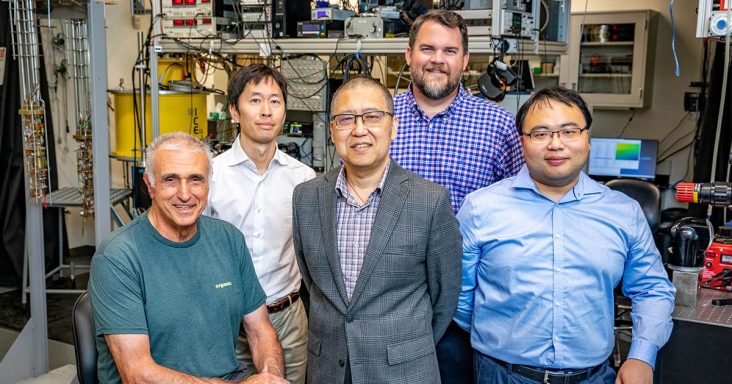$10 million grant to support semiconductor research at University of Arkansas
by September 20, 2022 2:51 pm 1,161 views

From left are Greg Salamo, Hiro Nakamura, Shui-Qing “Fisher” Yu, Hugh Churchill and Jin Hu, all of the University of Arkansas.
A team of researchers led by a University of Arkansas professor will use a $10.35 million federal grant to establish the first Energy Frontier Research Center in Arkansas, according to a Tuesday (Sept. 20) news release.
The Center for Manipulation of Atomic Ordering for Manufacturing Semiconductors will investigate the formation of atomic orders in semiconductor alloys and their effects on various physical properties. The research is expected to allow for reliable, cost-effective and transformative manufacturing of semiconductors, the essential material used in computers and other electric devices.
The four-year grant from the U.S. Department of Energy is part of the agency’s $540 million in research funding to universities and national laboratories focused on clean energy technologies. The goal is to create and develop low-carbon manufacturing processes that will reduce greenhouse gas emissions.
According to the release, the award is based on the research team’s recent discovery that atoms in the alloy silicon germanium tin, a semiconducting material, demonstrate a short-range order in a periodic lattice. Short-range order refers to the regular and predictable arrangement of atoms of a short distance, usually one or two atom spacings. This discovery had a significant effect on the energy band gap and led to the hypothesis that material properties in semiconductor alloys could be designed and fabricated by manipulating the order of atoms.
The research team will be led by Shui-Qing “Fisher” Yu, an electrical engineering professor at the UA, and includes four colleagues in the physics department: Distinguished Professor Greg Salamo, assistant professor Jin Hu, associate professor Hugh Churchill and assistant professor Hiro Nakamura. The team also comprises several researchers at other institutions, including Arizona State University, George Washington University, Stanford University, University of California Berkeley, Dartmouth College, Rensselaer Polytechnic Institute, University of Arkansas Pine Bluff, University of Delaware and Sandia National Laboratory.
According to Yu, the center is already operational, and existing lab space on the UA campus will comprise the center. Plans are not in the works for a new building to house the center.
